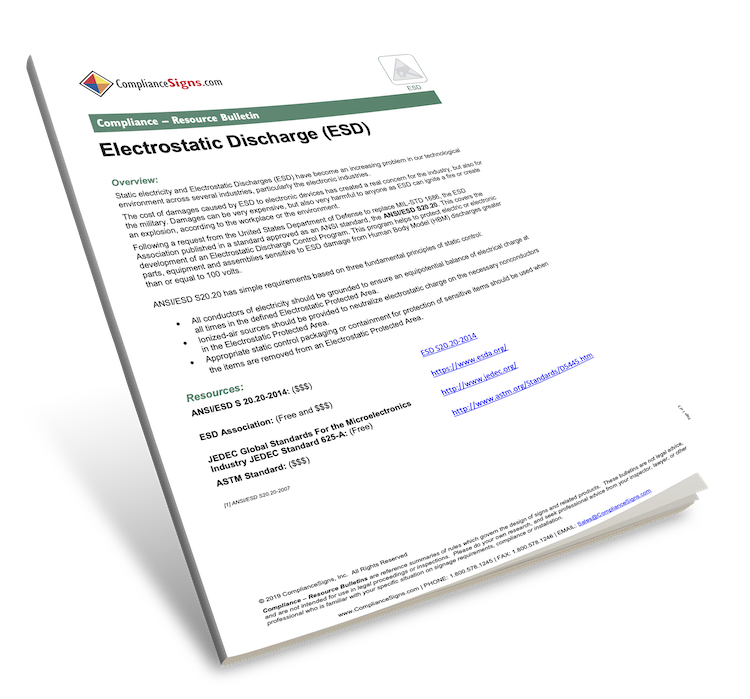
What to Know About Electrostatic Discharge (ESD) Signs
Our Electrostatic Discharge (ESD) Compliance – Resource Bulletin will help you understand some of the rules and regulations regarding sign requirements related to static sources that can damage electronic devices.
Topics include:
- Three principles of static control
- Design and symbols of ESD signs and labels
- Label types
- Links to relevant regulations
Click the image to open this bulletin as a pdf file.
Bulletin Overview
Static electricity and Electrostatic Discharges (ESD) have become an increasing problem in our technological environment across several industries, particularly the electronic industries.
The cost of damages caused by ESD to electronic devices has created a real concern for the industry, but also for the military. Damages can be very expensive, but also very harmful to anyone as ESD can ignite a fire or create an explosion, according to the workplace or the environment.
Following a request from the United States Department of Defense to replace MIL-STD 1686, the ESD Association published in a standard approved as an ANSI standard, the ANSI/ESD S20.20. This covers the development of an Electrostatic Discharge Control Program. This program helps to protect electric or electronic parts, equipment and assemblies sensitive to ESD damage from Human Body Model (HBM) discharges greater than or equal to 100 volts.


